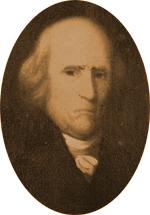Ropewalks
 Ropewalks were sites where hemp fiber was spun into yarn and then twine, cord, and rope of various dimensions. The name derived from the fact that production required the artisan, called the spinner, literally to walk backward many feet, carrying the hemp yarn and gradually feeding out lengths of it as it was twisted into rope by a turning wheel. Colonial American shipbuilders and merchants initially depended on British ropewalks for supplying cordage and cables, but soon colonists began making these products themselves.
Ropewalks were sites where hemp fiber was spun into yarn and then twine, cord, and rope of various dimensions. The name derived from the fact that production required the artisan, called the spinner, literally to walk backward many feet, carrying the hemp yarn and gradually feeding out lengths of it as it was twisted into rope by a turning wheel. Colonial American shipbuilders and merchants initially depended on British ropewalks for supplying cordage and cables, but soon colonists began making these products themselves.
The earliest and best-known ropewalk in North Carolina was established at Edenton in 1777 by Joseph Hewes. Josiah Collins Sr. and Samuel Johnston (as silent partner and one-third owner) purchased the site from the Hewes estate after the death of Joseph Hewes in 1779. The site, located on a 131-acre tract on the east side of town parallel with Oakum Street, included the ropewalk, a wheelhouse, and two yarn houses. While the shipbuilding industry continued to boom, the Collins ropewalk manufactured hawsers, cables, and cordage of all kinds necessary for rigging ships. Its products in 1795 were said to be superior to any imported ones. At the turn of the century, the decline in local shipbuilding coincided with the rise of seine fisheries in the Albemarle Sound area; from that time forward, the Collins ropewalk produced seine twine, hanging twine, leading line, sinking line, ratline, rope up to three inches in circumference, and other products.
The Collins ropewalk remained in operation until 1839. A rival ropewalk specializing in cordage and seine twine had been established at New Bern by the early nineteenth century. Although its range of products was not so extensive as the Collins ropewalk, the New Bern ropewalk made sewing and whipping twine and bed cords as well as the usual seine cordage. A third ropewalk was erected at Plymouth in about 1818.
Rope making appears to have been a craft practiced at times by enslaved people in North Carolina. During the eighteenth century, when ropewalks specialized in supplying shipbuilders' needs, as many as 18 skilled enslaved male artisans were constantly employed. During the nineteenth century, when the output was primarily cordage and twine for commercial seine fisheries, about a dozen enslaved men and women labored in ropewalks.
Reference:
Carl Bridenbaugh, The Colonial Craftsman (1950).
Ebenezer Hazard, and Fred Shelley. “The Journal of Ebenezer Hazard in Virginia, 1777.” The Virginia Magazine of History and Biography 62, no. 4 (1954): 400–423. http://www.jstor.org/stable/4246052.
Schaffer, Mathew. “Edenton Ropewalk.” Beaufort County Now, August 30, 2013. https://beaufortcountynow.com/post/8765/.
Additional Resources:
Edenton, NC Papers, 1714-1937, Southern Historical Collection, UNC: http://www.lib.unc.edu/mss/inv/e/Edenton%28N.C.%29Papers.html.
Somerset Plantation, NC Historical Site: http://www.nchistoricsites.org/somerset/education.htm
Image Credit:
Josiah Collins purchased the Edenton ropewalk from the estate of Joseph Hewes after 1779. Image courtesy of N.C. Office of Archives & History. Available from https://www.ncdcr.gov/about/history/division-historical-resources/nc-highway-historical-marker-program/Markers.aspx?sp=search&k=Markers&sv=B-35 (accessed Sept. 6, 2012).
1 January 2006 | Stevenson, George, Jr.